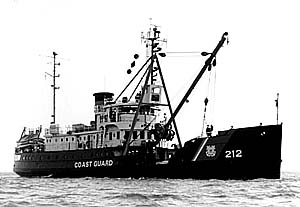
C.A. Thayer is a schooner built in 1895 near Eureka, California. The schooner has been preserved and open to the public at the San Francisco Maritime National Historical Park since 1963. She is one of the last survivors of the sailing schooners in the West coast lumber trade to San Francisco from Washington, Oregon, and Northern California. She was designated a National Historic Landmark on 13 November 1966.
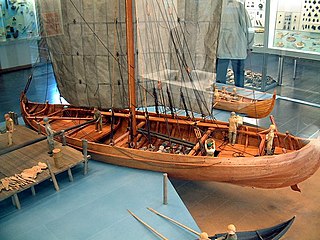
A knarr is a type of Norse merchant ship used by the Vikings. The knarr was constructed using the same clinker-built method as longships, karves, and faerings.

Eurana was a steam cargo ship built on speculation in 1915 by Union Iron Works of San Francisco. While under construction, the ship was acquired by Frank Duncan McPherson Strachan to operate in the Atlantic trade for his family's Strachan Shipping Company. The vessel made several trips between the Southeast of the United States and Europe before being sold to the Nafra Steamship Company in 1917. The freighter then entered the Mediterranean trade where she remained until September 1918 when she was requisitioned by the Emergency Fleet Corporation and transferred to the United States Navy to transport military supplies prior to the end of World War I, and as a troop transport after the war's end. In October 1919, the ship was returned to Nafra, which was then being reorganized to become the Green Star Steamship Company. In 1923, Eurana and twelve other ships passed to the Planet Steamship Company, newly formed to receive them from Green Star's bankruptcy. The ship remained principally engaged in the West Coast to East Coast trade for the next seven years. In 1930, together with several other vessels, Eurana was purchased by the Calmar Steamship Corporation, and renamed Alamar. The ship continued carrying various cargo between the East and West Coasts of the United States through 1941. On 27 May 1942, while en route from Hvalfjord to Murmansk carrying lend-lease war materiel to the Soviet Union during World War II as part of Arctic convoy PQ-16, she was fatally damaged by German aircraft bombs and was consequently scuttled by a British submarine to prevent her from becoming a menace to navigation.
The West Coast lumber trade was a maritime trade route on the West Coast of the United States. It carried lumber from the coasts of Northern California, Oregon, and Washington mainly to the port of San Francisco. The trade included direct foreign shipment from ports of the Pacific Northwest and might include another product characteristic of the region, salmon, as in the schooner Henry Wilson sailing from Washington state for Australia with "around 500,000 feet of lumber and canned salmon" in 1918.
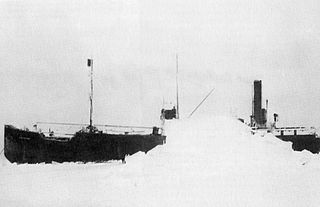
SS Baychimo was a steel-hulled 1,322 ton cargo steamer built in 1914 in Sweden and owned by the Hudson's Bay Company, used to trade provisions for pelts in Inuit settlements along the Victoria Island coast of the Northwest Territories of Canada. She became a notable ghost ship along the Alaska coast, being abandoned in 1931 and seen numerous times since then until her last sighting in 1969.

Eskimo is a 1933 American Pre-Code drama film directed by W. S. Van Dyke and released by Metro-Goldwyn-Mayer (MGM). It is based on the books Der Eskimo and Die Flucht ins weisse Land by Danish explorer and author Peter Freuchen. The film stars Ray Mala as Mala, Lulu Wong Wing as Mala's first wife Aba, Lotus Long as Mala's second wife Iva, Peter Freuchen as the Ship Captain, W. S. Van Dyke as Inspector White, and Joseph Sauers as Sergeant Hunt.
Metha Nelson was built as a wooden‑hulled merchant schooner which was later used in historic movies as a full-rigged ship. During World War II, she served the United States Navy.

Swayne & Hoyt was an American steamship company based in San Francisco, California, and in operation from the 1890s to 1940.

Christian Theodore Pedersen was a Norwegian-American seaman, whaling captain and fur trader active in Alaska, Canada, and the northern Pacific from the 1890s to the 1930s. He was called "one of the canniest old skippers in the western arctic" by a contemporary.

Olaf Swenson was a Seattle-based fur trader and adventurer active in Siberia and Alaska in the first third of the 20th century. His career intersected with activities of notable explorers of the period, and with the Russian Civil War. He is credited with leading the rescue of the Karluk survivors from Wrangel Island in 1914. According to historian Thomas C. Owen, Swenson's "practicality and zest for adventure made him an ideal entrepreneur on the arctic frontier..."
Providence Bay is a fjord in the southern coast of the Chukchi Peninsula of northeastern Siberia. It was a popular rendezvous, wintering spot, and provisioning spot for whalers and traders in the nineteenth and early twentieth centuries. Emma Harbor is a large sheltered bay in the eastern shore of Providence Bay. Provideniya and Ureliki settlements and Provideniya Bay Airport stand on the Komsomolskaya Bay. Plover Bay in English sources sometimes refers specifically to the anchorage behind Napkum Spit within Providence Bay but was commonly used as a synonym for Providence Bay; Russian 19th century sources used the term for an anchorage within Providence Bay.

Hans Ditlev Bendixsen was a Danish-American shipbuilder who was instrumental in the development of the merchant marine industry on the West Coast of the United States. His lumber schooners were built in or near Eureka, California in shipyards on Humboldt Bay for over 30 years. These schooners played a major role in the historic west coast lumber trade.
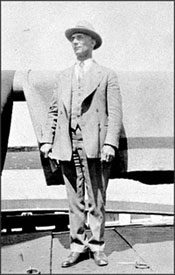
Christian Klengenberg Jorgensen, was a Danish whaler, trapper, and trader, active for 34 years in Alaska and Northern Canada. He is notable for opening trade routes to the Copper Inuit territory. Klengenberg is also credited with the discovery of Blond Eskimo and recounting his experience to the anthropologist Vilhjalmur Stefansson who went on to publish about their existence.
Narwhal was a whaling ship, a barque which was part of the Arctic fleet between 1883 and 1907.

West Cajoot was a Design 1013 cargo ship built in 1919 by the Los Angeles Shipbuilding & Dry Dock Co of Los Angeles. She was one of many ships built by the company for the United States Shipping Board.
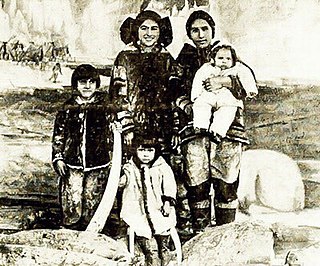
The Way of the Eskimo is a lost 1911 American silent drama film that portrayed the Inuit or "Eskimo" culture of northeastern Canada along the coast of Labrador. Directed by William V. Mong and produced by Selig Polyscope Company, this "photoplay" was based on a love story written by Columbia Eneutseak, a young Inuit woman who was born in the United States in 1893, in the "Esquimaux Village" exhibition at the World's Columbian Exposition in Chicago. She, fellow Inuit performer Zacharias Zad, and William Mong costarred in the film with a supporting cast that included members of Columbia's immediate family and other Inuit players. While this production was promoted in 1911 as being filmed on location in northern Canada, it was actually shot that year at the snow-covered port town of Escanaba, Michigan, along a frozen stretch of shoreline of Little Bay de Noc, which connects to Lake Michigan.

Lost in the Arctic is a lost 1911 American silent drama film that portrayed the Inuit or "Eskimo" culture in the northern coastal area of Labrador. Directed by William V. Mong and produced by the Selig Polyscope Company, the "one-reeler" costarred Columbia Eneutseak, J. C. Smith, and also Mong. The film was not, as advertised by Selig and in trade publications in 1911, shot in the Arctic or even farther south in Labrador. It and another Selig release, The Way of the Eskimo, were produced at the same time in the same location in the United States, in Escanaba, Michigan. Both "Arctic" stories were filmed there in less than two weeks during the early winter months of 1911, staged along the frozen shoreline of Little Bay de Noc that connects to Lake Michigan.
Lily was a two-masted schooner (1882) which in 1934 was modified for use as the 18th century full-rigged ship HMS Bounty in the 1935 film Mutiny on the Bounty with Clark Gable and Charles Laughton.



